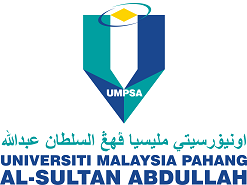EXPLORING A MOBILE APPLICATION FOR REPORTING NON-COMPLIANCE WITH HALAL STANDARDS: A PILOT STUDY
DOI:
https://doi.org/10.15282/jgi.7.1.2024.10319Keywords:
Mobile application, Halal industry, Market researchAbstract
The purpose of this paper is to explore a mobile application for Halal Reporting Non-Compliance. The app is developed to enable users to report non-compliance with the Halal standards and encourage community involvement in promoting Halalan Tayyiban, as well as providing information and education on Halal issues. The project’s objectives include creating a user-friendly app for reporting Halal non-compliance, fostering transparency in the Halal industry, and educating consumers about Halal standards, certification, and compliance. To achieve these objectives, market research methods were chosen in order to assess the viability and value of developing a mobile application. A cross-sectional design using questionnaires was conducted as a pilot study to potential users between May and June 2023. Sixty-eight students participated in this survey. Regarding the most important factors that respondents consider in choosing a mobile application, 48 (70.6%) consider the accuracy of information and trustworthiness of the reporting system as the most important factor when choosing a mobile application that promotes Halal compliance and enables reporting of non-compliance with Halal standards. This initial research serves as a promising foundation for future development of the Halal Report app, with a clear understanding of user expectations and preferences.
References
Abdallah, A. (2021, November 13). Has the Lack of a Unified Halal Standard Led to a Rise in Organised Crime in the Halal Certification Sector? Forensic Sciences, 1(3), 181–193.
Ahmad, A. N., Abdul Rahman, R., Othman, M., & Ungku Zainal Abidin, U. F. (2017, April). Critical success factors affecting the implementation of Halal food management systems: Perspective of Halal executives, consultants and auditors. Food Control, 74, 70–78.
Al-Razi. (1995). Tafsīr al-Fakhr Al-Rāzī. Beirut: Dār Al-Fikr.
Azam, M. S. E., & Abdullah, M. A. (2020, March 31). Global Halal Industry: Realities and Opportunities. International Journal of Islamic Business Ethics, 5(1), 47.
Ganesha H.R., & Aithal, P. S. (2022). How to Choose an Appropriate Research Data Collection Method and Method Choice among Various Research Data Collection Methods and Method Choices during Ph.D. Program in India? SSRN Electronic Journal.
Grand View Research, Inc. (2022). Halal Food and Beverage Market Size Report, 2030. Retrieved March 20, 2023, from https://www.grandviewresearch.com/industry-analysis/Halal-food-market
Hadi, S, & Abdul, G. (2019). Halal Viral Issues in Malaysia. Halal Journal, 3(2019), 61–71. https://www.Halal.gov.my/v4/pdf/-jurnal/5.%20HALAL%20VIRAL%20ISSUES%20IN%20MALAYSIA.pdf
Lohr, S. L. (2021). Sampling: design and analysis. Chapman and Hall/CRC.
United Nations Development Programme. (2015). Sustainable Development Goals. UNDP. Retrieved March 20, 2023, from https://www.undp.org/sustainable-development-goals.
Downloads
Published
Issue
Section
License
Copyright (c) 2024 The Author(s)

This work is licensed under a Creative Commons Attribution-NonCommercial 4.0 International License.



